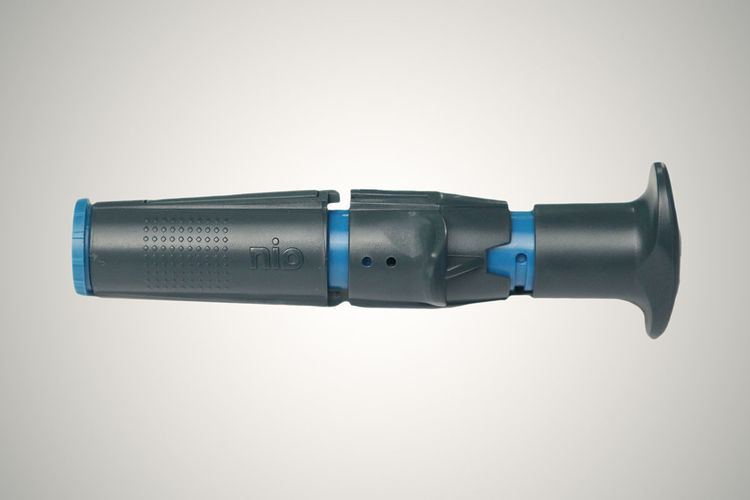eMedicine 80431 | ||
 | ||
Intraosseous infusion (IO) is the process of injecting directly into the marrow of a bone to provide a non-collapsible entry point into the systemic venous system. This technique is used to provide fluids and medication when intravenous access is not available or not feasible. A comparison of intravenous (IV), intramuscular (IM), and intraosseous (IO) routes of administration concluded that the intraosseous route is demonstrably superior to intramuscular and comparable to intravenous administration (in delivering paediatric anaesthetic drugs). This route of fluid and medication administration is an alternative one to the preferred intravascular route when the latter cannot be established in a timely manner.
Contents
Effectiveness
This American Heart Association guideline cited two randomized controlled trials, one of 60 children and one of electively cannulated hematology/oncology patients. In addition, uncontrolled studies have been performed, one of which reported 72% to 87% rates of successful insertion.
Procedure
The needle is injected through the bone's hard cortex and into the soft marrow interior which allows immediate access to the vascular system. An IO infusion can be used on adult or pediatric patients when traditional methods of vascular access are difficult or otherwise cause unwanted delayed management of the administration of medications. Each IO device has different designed locations, but the most common site of insertion is the antero-medial aspect of the upper, proximal tibia as it lies just under the skin and can easily be palpated and located. The anterior aspect of the femur, the superior iliac crest and the head of the humerus are other sites that can be used. The IO needle is then positioned at a 90 degree angle to the injection site, and the needle is advanced through manual traction, impact driven force, or power driven. The site of injection can be maintained for 24–72 hours, after which another route of access should be obtained to prevent the risk of an infection at the site.
Intraosseous infusion is contraindicated when there is a possibility that the potential site of injection has a known, or suspected fracture, appears to be visibly infected, or is burned. Medical conditions that might also preclude the use of intraosseous infusion include osteopenia, osteopetrosis, and osteogenesis imperfecta as fractures are more likely to occur. The procedure also only allows for one attempt per bone meaning another route of infusion much be secured, or a different bone chosen.
Although intravascular access is still the preferred method for medication delivery in the prehospital area, IO access for adults has become more common. As of 2010, American Heart Association no longer recommends using the endotracheal tube for resuscitation drugs, except as a last resort when IV or IO access cannot be gained. The IO is becoming more and more common in civilian and military based pre-hospital emergency medical services (EMS) systems around the world. Intraosseous access has roughly the same absorption rate as IV access, and allows for fluid resuscitation as well as high-volume drugs such as sodium bicarbonate to be administered in the setting of a cardiac arrest when IV access is unavailable. Endotracheal administration allows only specific drugs that have relatively low toxicity to lung tissue, and must be restricted to relatively low volumes to avoid drowning the patient.
Devices
The automatic intra-osseous devices allow quick and safe access to the patient's vascular system for fluid and drug administration. There are several FDA approved IO devices: The BIG Bone Injection Gun and The NIO New Intra Osseous device are automatic intra-osseous infusion device used by military and civilian healthcare systems; the battery-powered EZ-IO and hand-powered Fast1, Fast Combat and Fast Responder. Other devices include the Cook IO needle and the Jamshidi 15G.
There have been several studies comparing the EZ-IO and the BIG. Another paper compared the EZ-IO with the Cook IO needle.
